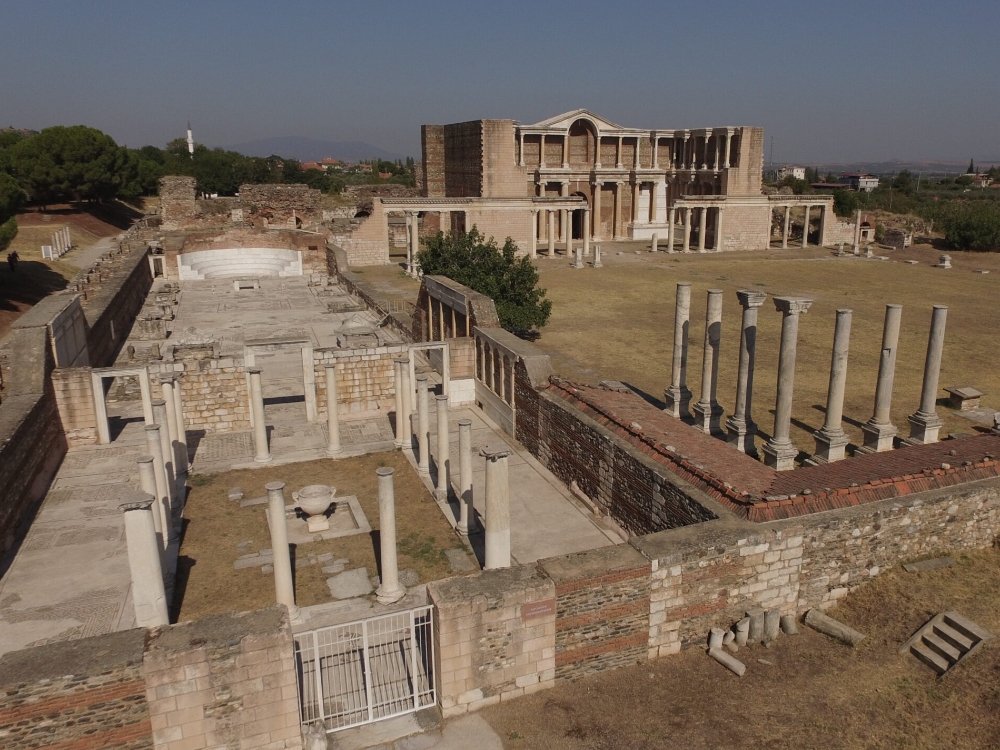Gymnasium

The city of Sardis, the history of which dates from nearly 1000 B.C. served as the capital city of the Lydian Kingdom. The city was the Provincial Centre during the Roman Period and became the Episcopal Centre in the Byzantine Period. It was established on the road which links the Aegean coasts to Central Anatolia. The most significant remains of the city are the Sacred Temple of Artemis and a gymnasium and a synagogue. The Temple of Artemis is recorded as being one of the greatest temples built in antiquity, the fourth largest Ionic temple of the ancient world. The small church behind the temple is thought to have been built in the 5th century A.D. After antiquity, the sacred placed was gradually abandoned and the stones of the temple were taken away be used in new construction as spolia and consequently these buildings became ruins in time. At the start of the 20th century (1914-1920), the temple was completely buried beneath the earth except for the upper parts of two of its columns. This is extremely important in terms of indicating the large amount of erosion and deposition over the course of the past 1500 years. It is possible to see the traces of the restoration works that were carried out in response to the damage caused by earthquakes over the passage of the centuries and the temple is also important for recording in traces the physical evidence of the natural disasters in the region. The area has an international significance because The Ancient City of Sardis and the Lydian Tumuli of Bin Tepe (Thousand Hills) is on the tentative list of the UNESCO World Herritage.







